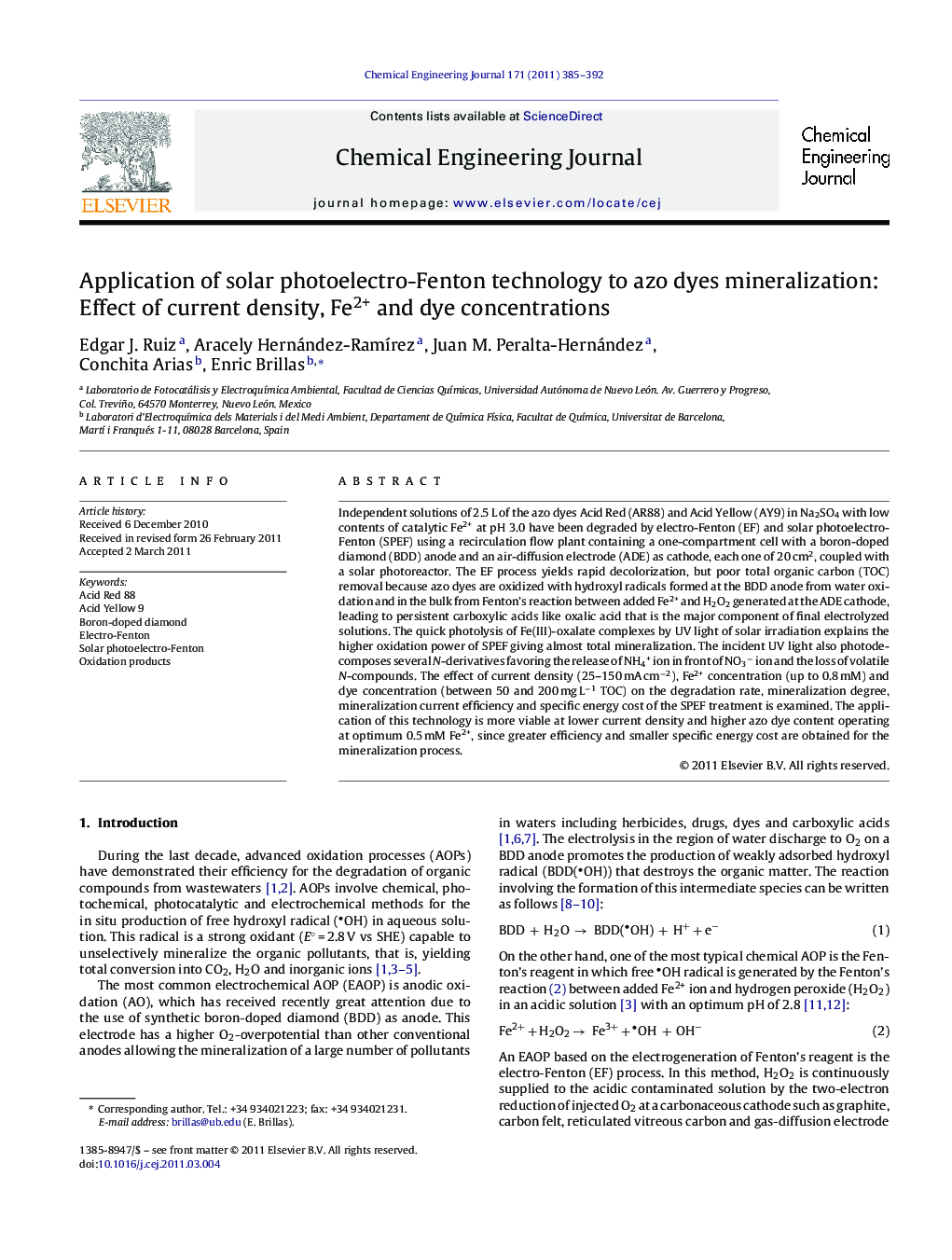| Article ID | Journal | Published Year | Pages | File Type |
|---|---|---|---|---|
| 150589 | Chemical Engineering Journal | 2011 | 8 Pages |
Independent solutions of 2.5 L of the azo dyes Acid Red (AR88) and Acid Yellow (AY9) in Na2SO4 with low contents of catalytic Fe2+ at pH 3.0 have been degraded by electro-Fenton (EF) and solar photoelectro-Fenton (SPEF) using a recirculation flow plant containing a one-compartment cell with a boron-doped diamond (BDD) anode and an air-diffusion electrode (ADE) as cathode, each one of 20 cm2, coupled with a solar photoreactor. The EF process yields rapid decolorization, but poor total organic carbon (TOC) removal because azo dyes are oxidized with hydroxyl radicals formed at the BDD anode from water oxidation and in the bulk from Fenton's reaction between added Fe2+ and H2O2 generated at the ADE cathode, leading to persistent carboxylic acids like oxalic acid that is the major component of final electrolyzed solutions. The quick photolysis of Fe(III)-oxalate complexes by UV light of solar irradiation explains the higher oxidation power of SPEF giving almost total mineralization. The incident UV light also photodecomposes several N-derivatives favoring the release of NH4+ ion in front of NO3− ion and the loss of volatile N-compounds. The effect of current density (25–150 mA cm−2), Fe2+ concentration (up to 0.8 mM) and dye concentration (between 50 and 200 mg L−1 TOC) on the degradation rate, mineralization degree, mineralization current efficiency and specific energy cost of the SPEF treatment is examined. The application of this technology is more viable at lower current density and higher azo dye content operating at optimum 0.5 mM Fe2+, since greater efficiency and smaller specific energy cost are obtained for the mineralization process.
